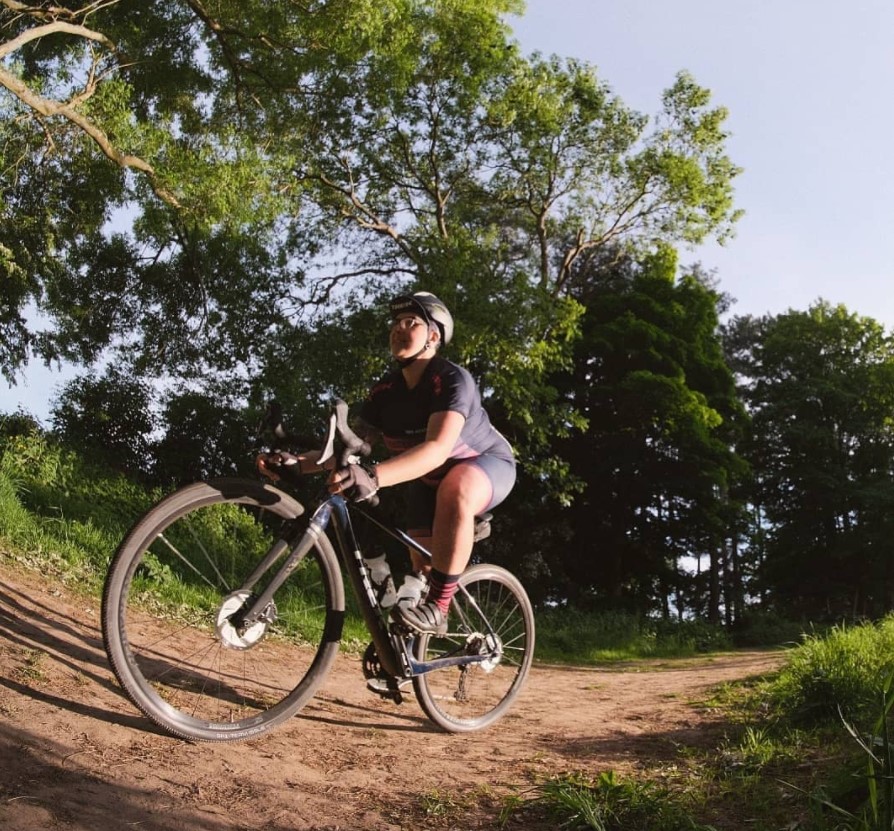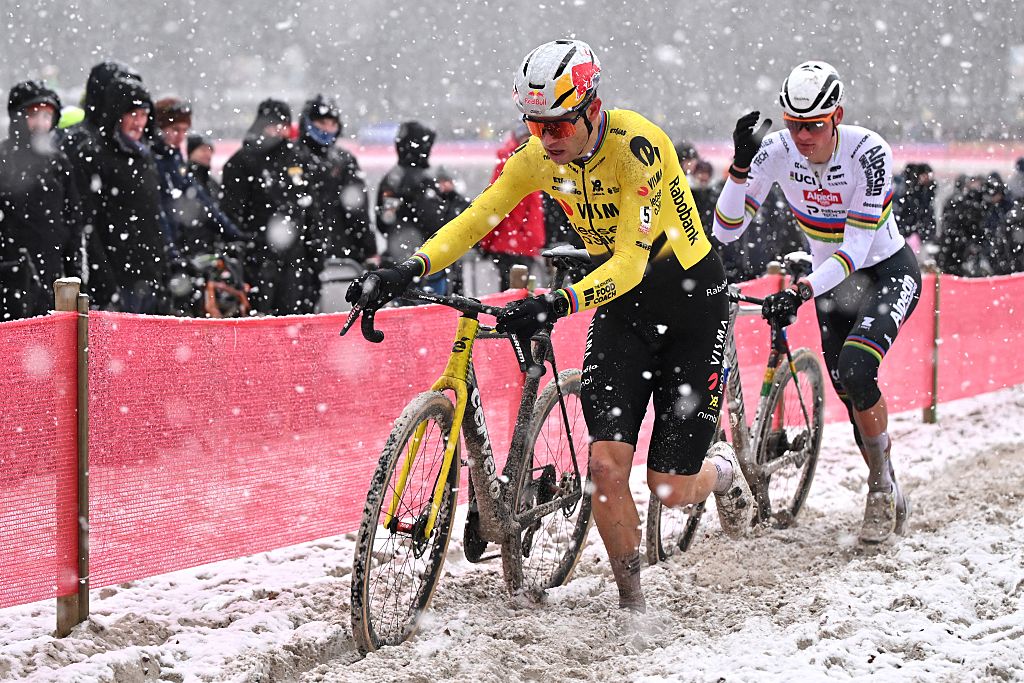Best water bottles for cycling 2025: Stay hydrated on the go
Keep hydrated for peak performance with one of the best water bottles for cycling

While often overlooked, the humble water bottle, or bidon if you prefer to use the more traditional term, is very much appreciated by riders of all kinds. Whether you subscribe to the Lycra league, dub yourself a hi-viz hero, or prefer to do your joyriding in jeans, all cyclists need to stay hydrated, and giving some thought to what makes the best water bottles for cycling stand out among the competition can go a long way towards optimising your time on the bike.
Staying hydrated is incredibly important. Not only can it severely help your performance, it's just a simple fact of general safety: if you don't drink enough and become dehydrated, you risk serious health complications. Even a little dehydration can affect your ability to focus on the task at hand and make snap decisions when faced with obstacles and road hazards.
It always pays to have the best tools for the job, and despite what you may think, water bottles aren't all created equal. Some are designed for very specific purposes, and boast well considered details that can make hydrating mid-ride easier and more efficient than ever. Don't believe us? Keep reading for a roundup of what we think are the best water bottles for cycling, and why they're worth your attention.
If you're a pure road rider, you may want a bottle that adds as little weight as possible but if off-road is your specialism, perhaps you're more concerned about keeping mud out of your mouth. To help with the process, we've put together a list of what we think are the best water bottles for cycling on the market right now for the various potential use-cases.
When you're done, be sure to check out our guides to the best bottle cages for cycling to hold your new bottle, and the best energy drinks to fill them up.
Best water bottles for cycling
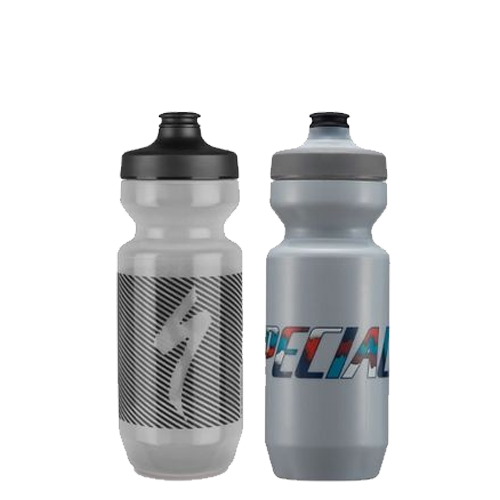
➕ Customisable with colours, designs and caps
➕ Easy disassembly for cleaning
➕ Purist coating keeps water tasting like water
➖ Perhaps too commonplace for some
Most bike shops stock the Specialized Purist bottle, and for good reason. The inside of the bottle has an ultra-thin silica coating that keeps anything from sticking. That means no mould, no bacteria, and no leftover sports drink. All it takes is a bit of soap and water to get everything clean. It also keeps the plastic taste away from the water – something we're very grateful for.
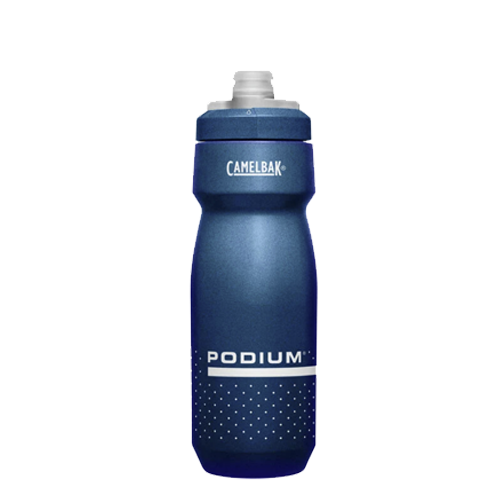
➕ Valve means never dealing with opening or forgetting to close
➕ Colour options look good
➕ Valve can be disassembled for cleaning
➖ Hard to get the last bit of liquid out
Sometimes the simplest solution is the best, and the Camelbak Podium has a valve that opens against the pressure of a gentle squeeze. You don't have to open it or close it, or really think about it other than to get the hydration you need. You can also lock it to stop it from leaking when you're travelling, and for cleaning, the whole thing disassembles without much trouble.
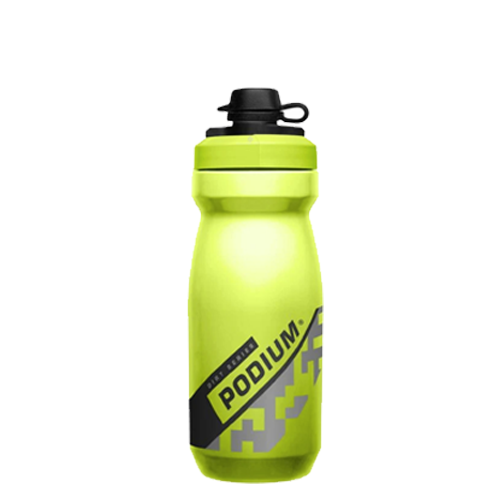
➕ Valve means never dealing with opening or forgetting to close
➕ Valve can be disassembled for cleaning
➕ Cover keeps dirt and dust out
➖ Only available in smaller sizes
You'd be surprised how easy it is for water to be contaminated when riding through farm roads in the wet and mud then drinking whatever your tyres fling at your bottles. If you like the idea of the minimum-effort valve that comes with the Camelbak Podium, but would rather keep dust, dirt and any other muck out of your water, then the Camelbak Podium Dirt has got you covered (quite literally).
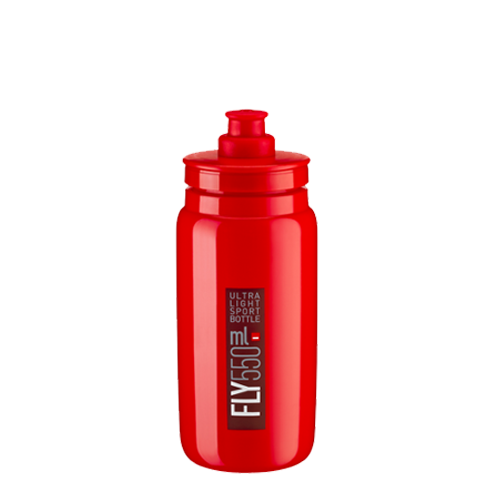
➕ Ultra-lightweight
➕ Lots of colour and design options
➖ No choice of different valves
Claimed to be the world's lightest and the most-used water bottle on the UCI World Tour, the Elite Fly boasts a saving of 40g on standard bottles. There are a huge variety of colours available and designs for the Tour, Giro and Vuelta and most of the top pro teams, while the Fly also comes in 750ml and 950ml sizes. There are no different valve options, unlike the Specialized Purist, although a protective cap cover, which is included with the Fly MTB version, can be purchased separately for those who want to keep out the mud and grime.

➕ Small enough you could bring multiple if needed
➕ Adds a water option for bikes without a cage
➖ No storage once empty
➖ Small capacity
If you're out for a long ride in sweltering heat and need more bottles than your bike can carry, the BackBottle offers a simple option: just slip an extra bottle or two into your jersey pockets. The downside is that, once you've used up your water, you still have a bottle to carry, but there's no simpler way to carry extra water when you need it.
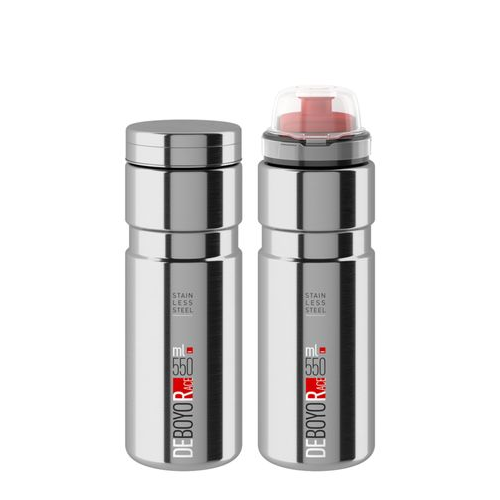
➕ Keeps your drinks hot or cold
➕ Comes with two cap options
➕ Classic look
➖ Small capacity
One of the few cycling-specific water bottles that boasts vacuum sealing to hold temperature all day long, the Elite Deboyo Race promises the same performance you'd expect from a good Thermos – that it will keep your drink hot for up to 12 hours or cold for up to 24 hours. The high-flow cap makes it easy to drink quickly, but there's a second cap if you prefer to sip.
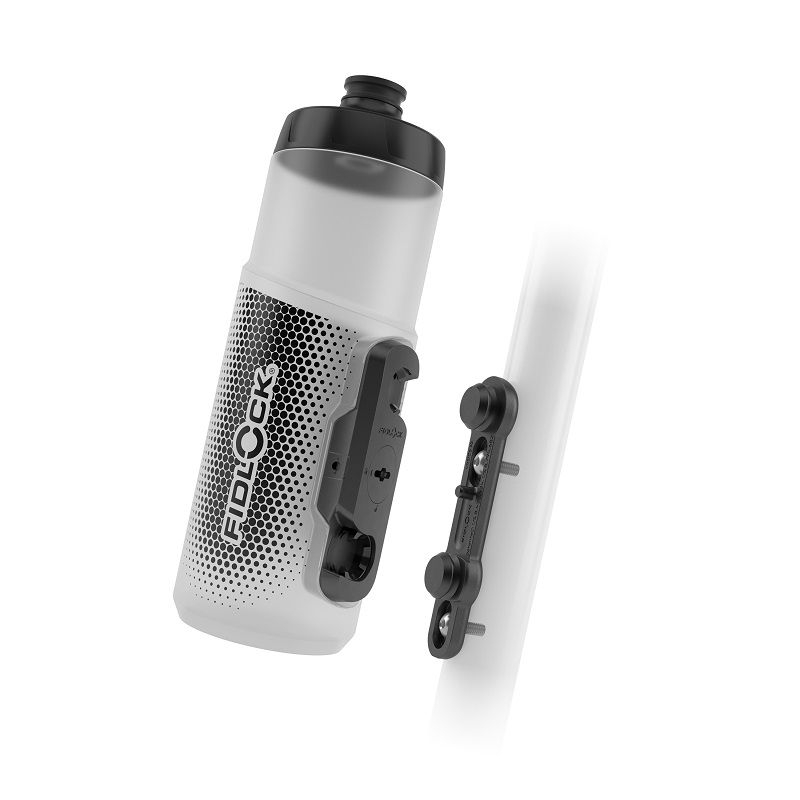
➕ Minimal mounting
➕ Twist action is perfect for small frames and framebags
➕ Lots of colour options
➖ Can only mount Fidlock bottles
Fidlock has built a brand around neat magnetic closures, but it all started with its twist-locking bottles. The design uses a slim mounting bracket on the frame instead of a bottle cage, which securely attaches to the Fidlock-specific bottle with magnets. A simple twisting action frees the bottle and remounting involves holding the bottle close to the mounting studs for the magnets to do their work, making it a great option for riders with tight clearance. Fidlock offers a range of bottle sizes, plus alternative bottle types, accessory holders and bags.
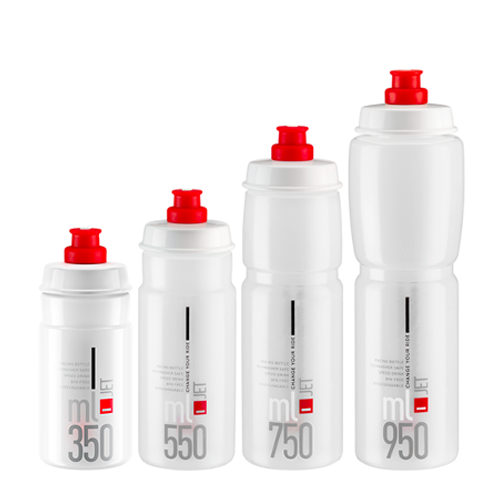
➕ Biodegradable
➕ Lots of size options
➖ Not as many colour and design options as other bottles in the Elite range
Elite's biodegradable Jet bottle is designed to break down between three months and five years, meaning it won't plague the planet forever when you're done with it. The Jet comes in four different sizes, from 350ml to 950ml, and shares much of the same technology as Elite's regular plastic bottles, including a pledge not to alter the taste of the liquid as well as being BPA-free and dishwasher safe. There is also a version with a cap to keep the dirt out, which became Senior Tech Writer Will's favourite winter cycling accessory after being struck mid-ride by a catastrophic stomach bug.
How to choose the best water bottles for cycling
Which water bottle is best for cycling?
Everyone will have a different set of criteria but, as a general rule, if you want to choose one of the best water bottles for cycling, opt for something that carries a decent amount of water, that's free of BPA-free (Bisphenol A is a chemical used in the manufacturing of some plastic containers that can transfer into food and drink) and doesn't leak.
No one likes a plastic aftertaste, so that's another consideration to make; some bottles come with an internal lining that prevents it, while another option is to choose a stainless steel bottle instead.
There are bike-specific insulated bottles on offer, which are designed to keep your water colder for longer – and even some with Thermos-style properties to keep hot drinks hot. Consider how long you're likely to be out riding, and whether it's worth investing a little more for one of these.
It's good to find a bottle that's easy to drink from while on the go and there are a variety of different caps on offer – some with fast-flowing valves and some with self-sealing ones that you don't have to wrestle open with your teeth. However, not everyone drinks while they ride, with some people preferring to stop and sip. Depending on your personal preference, choose a bottle that will suit your needs and match your style.
What size water bottle should I get for cycling?
It all depends on the ride and the weather. If it's a long ride and a hot day, even two of the biggest bottles you can find won't be enough. On the other hand, there are actually reasons not to always carry every last bit of water you can.
It might sound silly to consider weight when it comes to water but it really does add up. Lots of gravel bikes have the ability to carry three water bottles. If you were to use three 26oz (750ml) bottles in each of the available cages, that's around 2.2kg (4.8lbs) of weight. If you need it, that's well worth the weight penalty, but it's significant if you're riding where a top-up is easily found. Our list of the best water bottles for cycling features options ranging from 12oz (350ml) up to 32oz (950ml), so there is a lot of variety on offer.
There's also the fact that if you're riding in super hot temperatures all day without insulated bottles, your water will become increasingly warm over the course of your ride. If you don't want to buy multiple insulated bottles, your best option is to carry fewer and top them up more often.
There's also frame size to consider. Most road bikes have plenty of space in the main triangle for water bottles, but not always. As the frame gets smaller, or if you add a frame bag, you might actually run into issues trying to fit the biggest bottles. Varying cages will work a little differently, too, so check out our list of the best bottle cages for cycling if you are having trouble and consider how tall the bottle you are thinking about is.
What it comes down to is that there's no right answer all the time. For short rides, a single bottle will likely see you through. As you stretch out the time, or when things heat up, you will want to go as big as makes sense while also trying not to go way over.
How do you carry water when cycling?
Most bikes have fittings to mount the best bottle cages, most commonly on the down tube, where it is tucked out of the way and easily accessible to the rider. Many bikes will have a second set of these fixings – or bosses – on the seat tube and many of the best gravel bikes come with a third set. However, if bottles weren't at the top of your shopping list when you were buying your bike, there are alternatives, such as carrying a bottle in your jersey or adding cages onto the back of the seat or the front of the handlebars – although these are far more cumbersome and less aerodynamic.
Are insulated cycling bottles worth it?
Most people don't want to spend a fortune on water bottles, so it's understandable to question those that make great claims and demand a slightly higher price. However, when it comes to insulated cycling water bottles, we'd say it's definitely worth it.
Insulated water bottles contain an internal lining that helps to keep your water at the same temperature for longer. There's nothing worse than taking a mouthful of warm water when you're craving something cold and refreshing, and that's what insulated bottles are designed to prevent from happening.
However, they can be overkill if you're just going on a short ride on a comfortably temperate day. When deciding whether or not they're worth it, think about how long you tend to ride for, and whether your local climate is likely to badly affect the temperature of your water.
How often do you need to replace your bottle?
There's no hard and fast rule to this one. Plastic water bottles will last forever in practical terms, which has its environmental implications. Companies such as Elite are starting to think about the materials they use for their bottles from a sustainability point of view – ensuring they can be recycled or use materials that are better for the environment. Cannondale even unveiled a 100-percent compostable water bottle for the EF Education-EasyPost team to use at the 2022 Giro d'Italia.
The challenges for professional cycling – in which thousands of bottles are thrown away each year – are, however, different from those for the average cyclist, who wants to get the best use out of their purchases. Over time, however, water bottles become more difficult to use, the outside gets scratched and it starts to be harder to get them out of the cages. They also start to look worn and can be hard to clean, even after a few months of heavy use.
If you are careful about cleaning them, they will last longer. It's also helpful to clean the inside of your bottle cages from time to time as a way to extend the life of your bottles. If you want something that lasts even longer, consider a metal bottle instead of plastic.
How do you clean your water bottle?
The last thing you want is to be drinking mould and old remnants from past rides.
The first thing to keep track of is what your particular bottle can tolerate. A dishwasher can be an excellent way to get a bottle clean, but the high heat could also destroy it if it's made of plastic. Some bottles are dishwasher safe and some are not, so make sure you check to see what yours can handle. Along the same lines, some bottles can handle a good scrubbing, while others only need a rinse.
If you want to be safe, stick to gentle cleaning only. Dish soap and warm water is enough to kill germs and it's far more important to get the pieces exposed to the soap and water than it is to aggressively scrub. Even if all you do at the end of a ride is take your bottles apart and thoroughly rinse them, you'll have gone a long way to keeping them clean and safe.
Sticking with the gentle cleaning suggestion, the other important thing you can do is make sure your bottles dry thoroughly. Never leave your bottles sitting in your bottle cages after storing your bike. That's a surefire way to get mould. Instead, open up your bottles, give them a rinse with soap and water, then let them sit with the tops removed. The exposure to air and a thorough drying will do a lot to make sure your bottles are clean and fresh the next time you grab them.
How we test
Testing is the backbone of the tech department at Cyclingnews and how we test is taken seriously, so read on to find out more.
Each member of the Cyclingnews tech team has amassed cupboards full of bottles over the years of press camps and cycling events, which means we have a lot of experience with what makes the best water bottle for cycling. When we are using cycling water bottles, we look for bottles that are easy to drink from, securely fit in a bottle cage and how easy they are to clean. In this guide, we have also highlighted bottles with additional features that improve their performance, plus those that come in a range of sizes and colours.
The latest race content, interviews, features, reviews and expert buying guides, direct to your inbox!
Mildred joined as Reviews Writer for Cyclingnews and BikePerfect in December 2020. She loves all forms of cycling from long-distance audax to daily errand-running by bike, and does almost everything on two wheels, including moving house, and started out her cycling career working in a bike shop. For the past five years she's volunteered at The Bristol Bike Project as a mechanic and session coordinator, and now sits on its board of directors.
Since then she's gone on to write for a multitude of cycling publications, including Bikeradar, Cycling Plus, Singletrack, Red Bull, Cycling UK and Total Women's Cycling. She's dedicated to providing more coverage of women's specific cycling tech, elevating under-represented voices in the sport, and making cycling more accessible overall.
Height: 156cm (5'2")
Weight: 75kg
Rides: Stayer Groadinger UG, Triban RC520 Women's Disc, Genesis Flyer, Marin Larkspur, Cotic BFe 26, Clandestine custom bike
